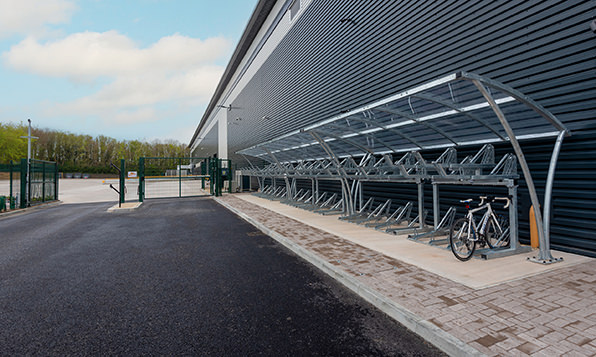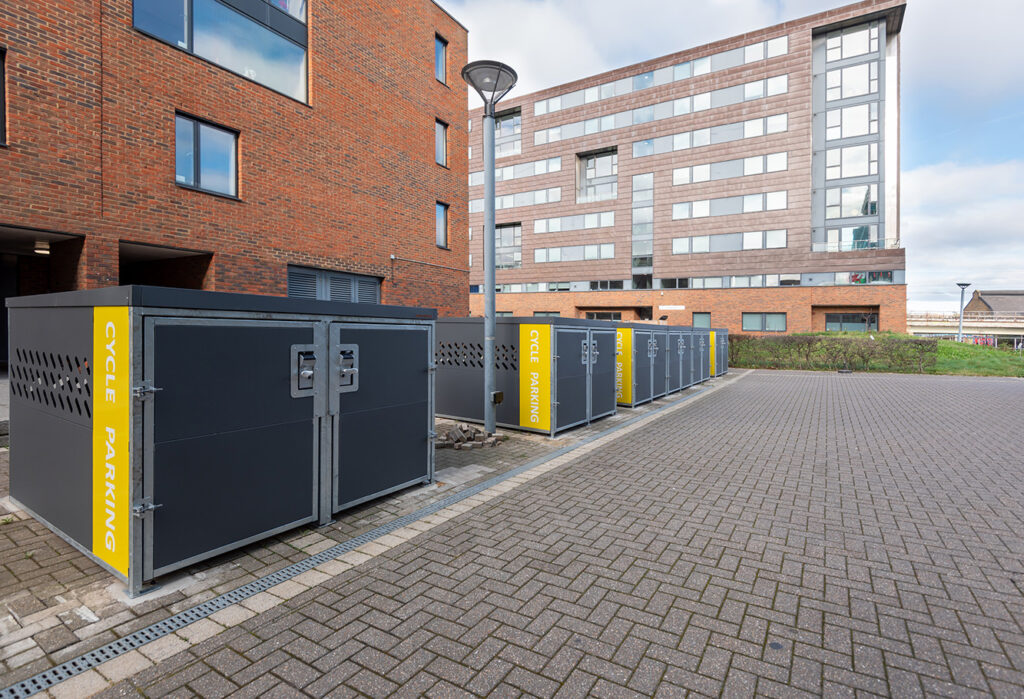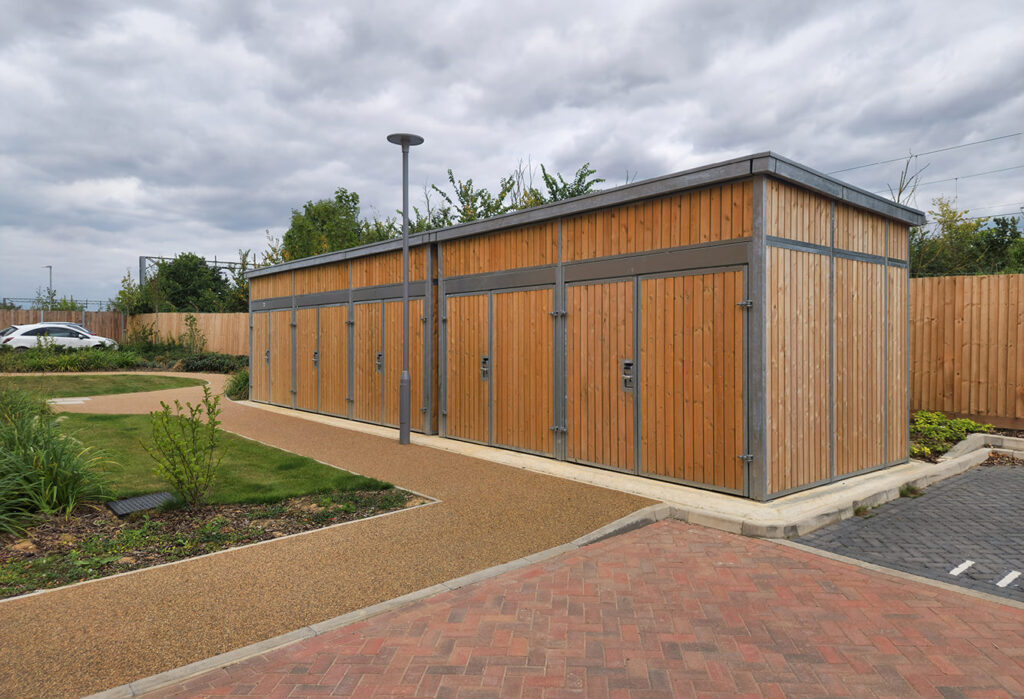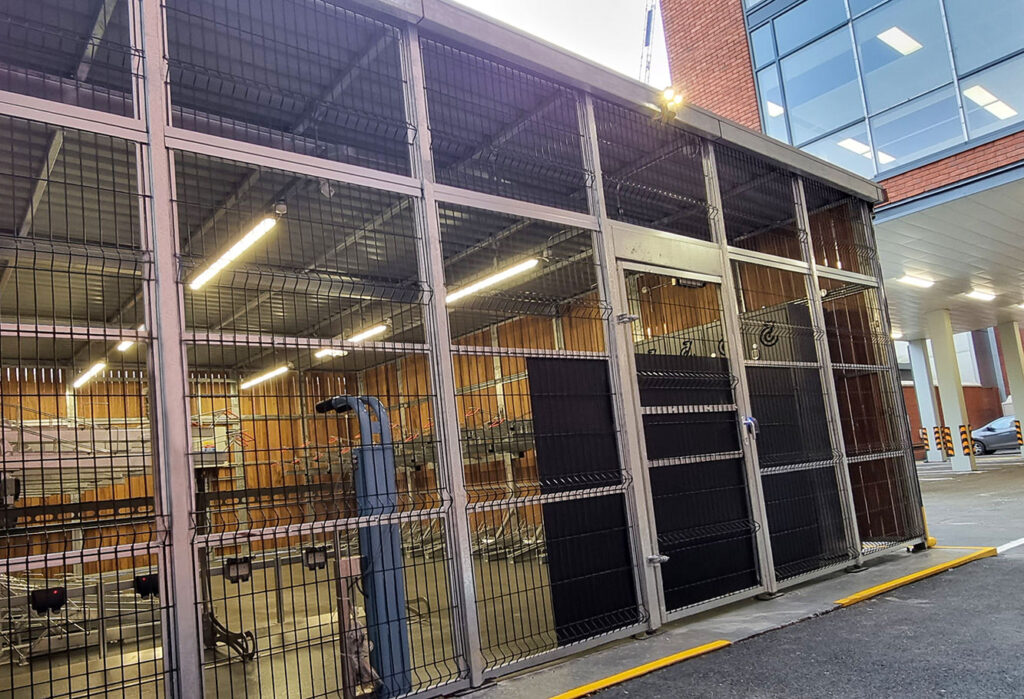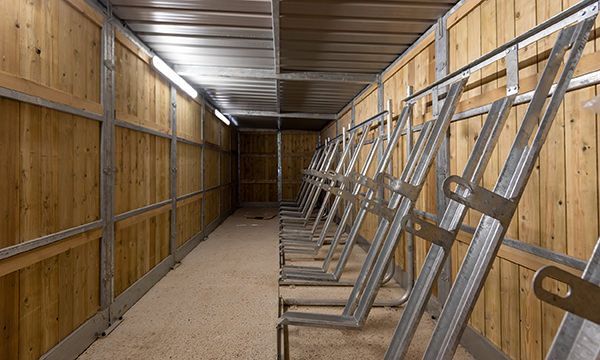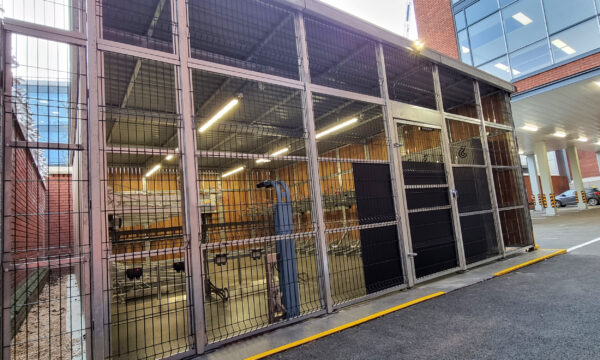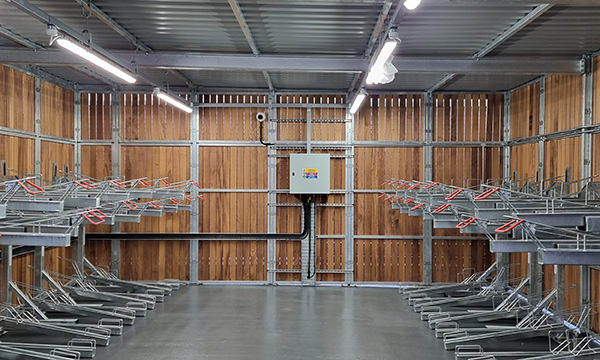Table of Contents:
A recent research report from Direct Line Cycling Insurance found that 56% of cyclists in the UK use their bike to commute, with a fifth doing so on a daily basis. However, the same report found that up to 1.5m cyclists are deterred from cycling for commuting due to restrictions on secure bike storage facilities.
Whether installed for employees in the workplace, students on a university campus, or residents of a housing development, the convenience of cycling can often be hindered by challenges around secure bike storage, particularly in communal settings. Cycling is only a practical travel alternative when there is a secure, safe storage in place to store the bike at the end of the journey.
Most planning decision notices for developments in the UK will include conditions for secure bike storage that dictate both the type and capacity required, and the diversity of the modern bike markets ensures that most requirements can be accommodated. In the following article, urbanspec takes a look into the considerations and various solutions for integrating secure bike storage in communal settings.
Addressing Communal Bike Storage Needs
Depending on the setting, the availability of secure bike storage will typically facilitate those who regularly engage in cycling, as well as encouraging uptake from less experienced users. The differing schedules and varying demands of individuals in communal settings means providing an appropriate capacity that goes beyond initial demand. This helps to ensure that all users are guaranteed storage space, as well as accommodate any potential increase in future demand.
Limitations on the available footprint for integrating bike storage in communal settings is often a challenge. While there are storage solutions designed to accommodate more high-density settings, prioritising considerations like location, size, and layout will help to maximise space and accessibility.
Ease-of-use should ultimately be the focus. If users are required to climb stairs or traverse through several doors or gates to gain access to a facility, it will stop short of encouraging uptake. An easily accessible facility is supported by visual guidance such as signage, and well-lit access routes. Signage can also be utilised within the facility to encourage users to engage in best practices, such as how to securely lock their bike.
Requirements for Public Spaces
The Standards for Public Cycle Parking Guide is intended to be widely applicable for public cycle parking procurement within the UK, such as at transport hubs, hospitals, educational facilities and at other buildings and facilities operated by either the private or public sector. It is intended to enable those designing and managing bike storage facilities to identify solutions which are simple for users to access, safe and secure, of a durable build to ensure longevity, and are fully in compliance with UK legal requirements.
Alternative transportation is also a key factor in BREEAM accreditation. Assessments take notice of how alternative modes of transportation that promote sustainable and eco-friendly practice are implemented, with 3 credits available for secure bike storage that meet BREEAM regulations. With BREEAM V7 currently in development and set for release in 2024, the current criteria for bike storage to meet compliance includes:
- A sufficient capacity of secure bike parking spaces covering all applicable users.
- The bike storage facility is protected from weather
- Bikes are secured within parking spaces and wheels are secured to the rack, floor or wall
- The racks and covered area are set in or fixed to a permanent structure
- There is enough space in the bike storage facility to make all bikes easily accessible
- The bike storage facility is installed in a prominent location that enables passive oversight
- Controlled lighting is available
Options for Safe Storage
When looking to integrate secure bike storage in communal settings, it’s important to consider options for bike stand and rack types to ensure users can park and secure their bikes in an orderly manner within the facility. Bike stands offer a cost-effective, minimalist design that provides quick-access bike parking, however, they are only effective where available footprint is not a restricting factor. Semi-vertical and two-tier racks, meanwhile, are ideal for maximising available floor space in high-density settings and utilise wheel trays to hold bikes in position when stored.
Bike shelters can provide cover against the majority of inclement weather, though they are open type structures not typically suited to provide long-term storage opportunities. Options to enclose the design with cladding systems offer the durability to withstand impact damage and discoloration from UV rays, however, there are limited opportunities to increase security within the open design.
A secure bike storage facility with access doors, a roofing system and options for cladding, such as coloured steel, timber slat and coated mesh, offers a higher potential for configuration and ensures an optimum level of security and weather protection.
Bike Modules
Typically utilised to provide individually secure bike storage, the modular design of bike modules can be utilised to form a connected series of units to maximise space in communal settings. Often installed close to surrounding buildings to enable clear lines of sight for users, bikes are locked in an upright, stable position in individually lockable cycle trays, stepped to maximise space efficiency.
Bike Stores
Bike stores are highly versatile and offer an efficient utilisation of available space in communal settings, accommodating vertical, semi-vertical, and level housing of bikes. This is typically achieved within a single-row layout, with the modular units able to be installed sequentially with individual door access, reducing the required footprint by enclosing only the rack space. Units can be specified as a fully enclosed or open-faced design, providing line of sight throughout the unit.
Bike Hubs
Designed to accommodate the maximum number of bikes within the available footprint, bike hubs are ideal for communal settings with high foot-traffic, comprising a strong manufacturing build that makes no compromise towards space efficiency or security. Configuration opportunities for access control, cladding, roof type, and the size and position of access doors come as part of a flexible design platform, integrating various bike parking types to provide an effective long-term storage solution.
